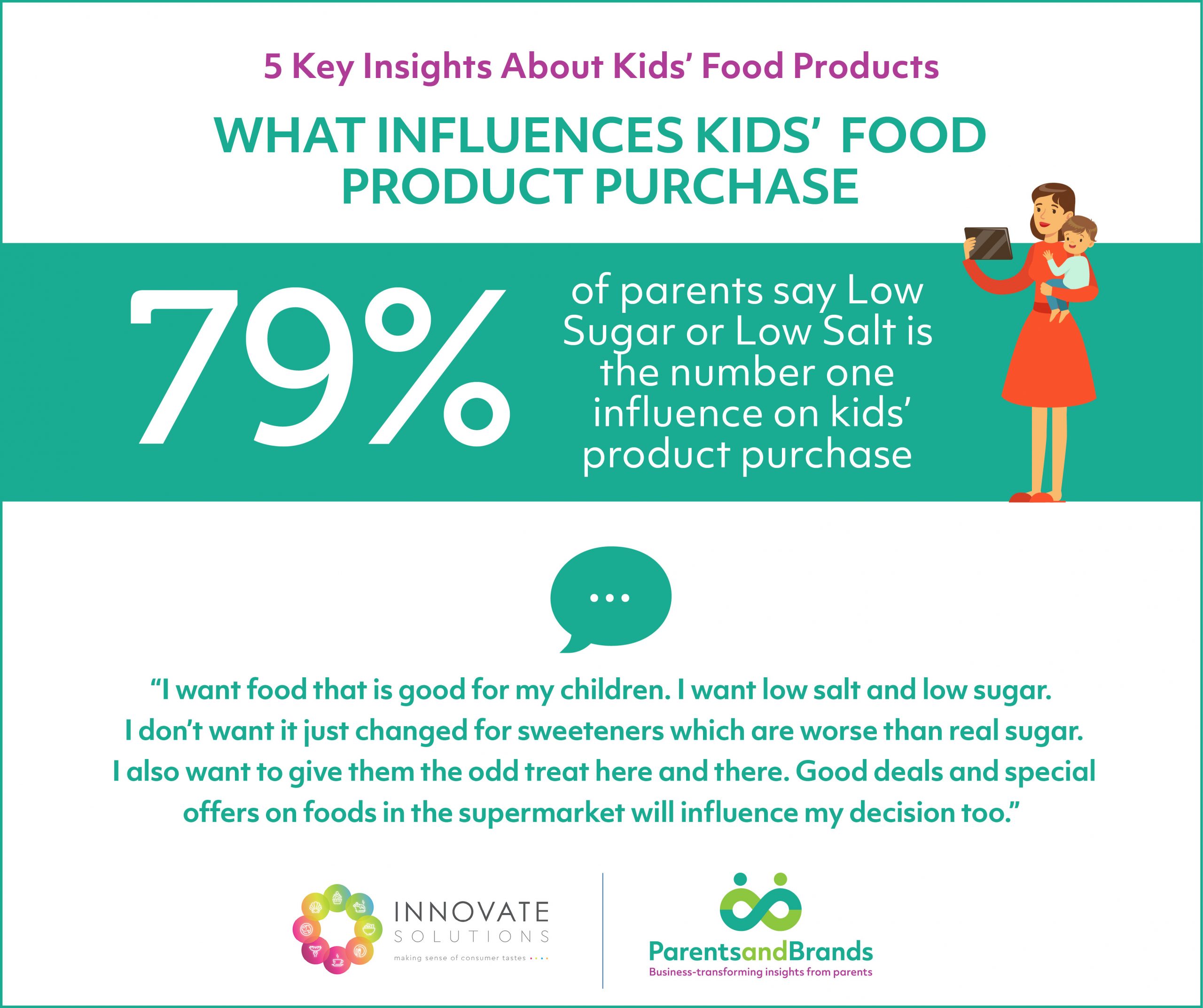This month’s insights report is looking at the topic of kids’ food products. We wanted to understand want influences parents on choosing and buying food products for their kids. We have identified 5 key trends from consumers on what influences their purchasing decisions. To gather this we ran an online survey and partnered with ParentsandBrands (https://www.parentsandbrands.com) who ran an online focus group on their private platform.
5 Key Insights On Kids Food Products
An online quantitative survey of 21 questions was distributed via email during October 2021 to 500 Irish consumers across the country. The survey was active for 12 days and the total number of complete responses was 397. Contact [email protected] for additional information.
Five trends came out of the feedback that are really interesting:
- Health claims on packaging motivates purchase.
- In the last 12 to 18 months parents have tried out different foods products for their kids.
- Offers influence parents to try new kids’ food products.
- Parents are actively seeking out more healthy options for their kids when it comes to snacks and confectionery.
- Low sugar/salt is a strong factor when choosing kids’s food products.
5 Key stats from Parents about Kids Food Products
74% of parents said that the package indicating it was a healthy kids product motivated them to buy a new product
67% of parents might consider or have actively been buying a more healthy confectionery or snack product for their child
65% of parents will try a new kids’ food product if there’s an offer
64% of parents said they had bought different food products like new snacks for their child during the pandemic
79% of parents say Low Sugar or Low Salt is the number one influence on kids’ product purchase
Online Focus Group Insights
An Online Focus Group was carried out on the ParentsandBrands (https://www.parentsandbrands.com) private platform in October 2021 with 34 women from across Ireland.
Here are some of the key insights and feedback:
Buying Snacks/Confectionery for Kids
“Snack wise I try to buy protein heavy foods that I know will fill them and keep them going like Babybel, Pepperami etc. Confectionery wise I try to go for smaller portions, small treat size bars or small individual jelly packs.”
Changes in the Last 12-18 Months
“What we buy has changed as a result of being at home more, trying to cut costs (food bills are already higher with more time spent at home) and because we got
used to baking regularly e.g. making snacks, lunchbox bakes and weekend treats. What we buy now are the real family favourites that no one is prepared to sacrifice!”
Trying New Kids’ Food Products
“For me it’s convenience, cost and nutritional value. Love a snack pack that I can take out on the go with us but want them to eat something that’s going to fuel them the right way. Also don’t want to pay a fortune for it, don’t mind a little more for the convenience.” ”
What Influences Kids’ Food Product Purchase
“I want food that is good for my children. I want low salt and low sugar. I don’t want it just changed for sweeteners which are worse than real sugar. I also want to give them the odd treat here and there. Good deals and special offers on foods in the supermarket will influence my decision too.”
Key Recommendations for Brands
The nutritional profile of kids’ products tends to be the deciding factor for parent, even between branded and unbranded varieties. Make sure the health properties of your kids’ products are clearly communicated on the packaging. Consider getting a health claim to support the communication.
64% of parents said the family is “hungry” to try new things such as snacks, because they are at home more. Consider how you can innovate on your current product or create a new product to appeal to this consumer appetite for novelty, using taste testing and consumer insights to validate product development.
21% of parents “only care about price” when picking out kids’ food products, compared with just 9% last year. Meanwhile, they say that what and how they buy has changed over the last 18 months. Understanding these family life changes and key drivers by talking to consumers is vital to product and market success.

